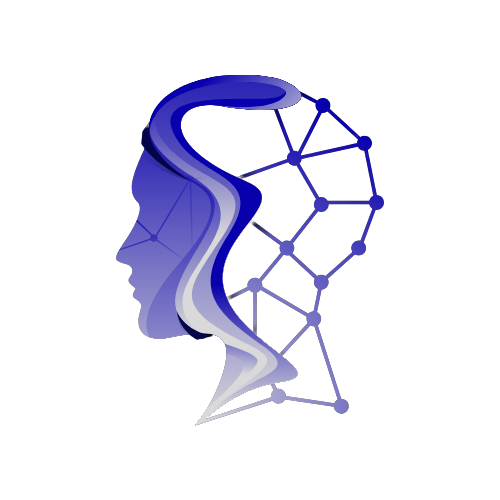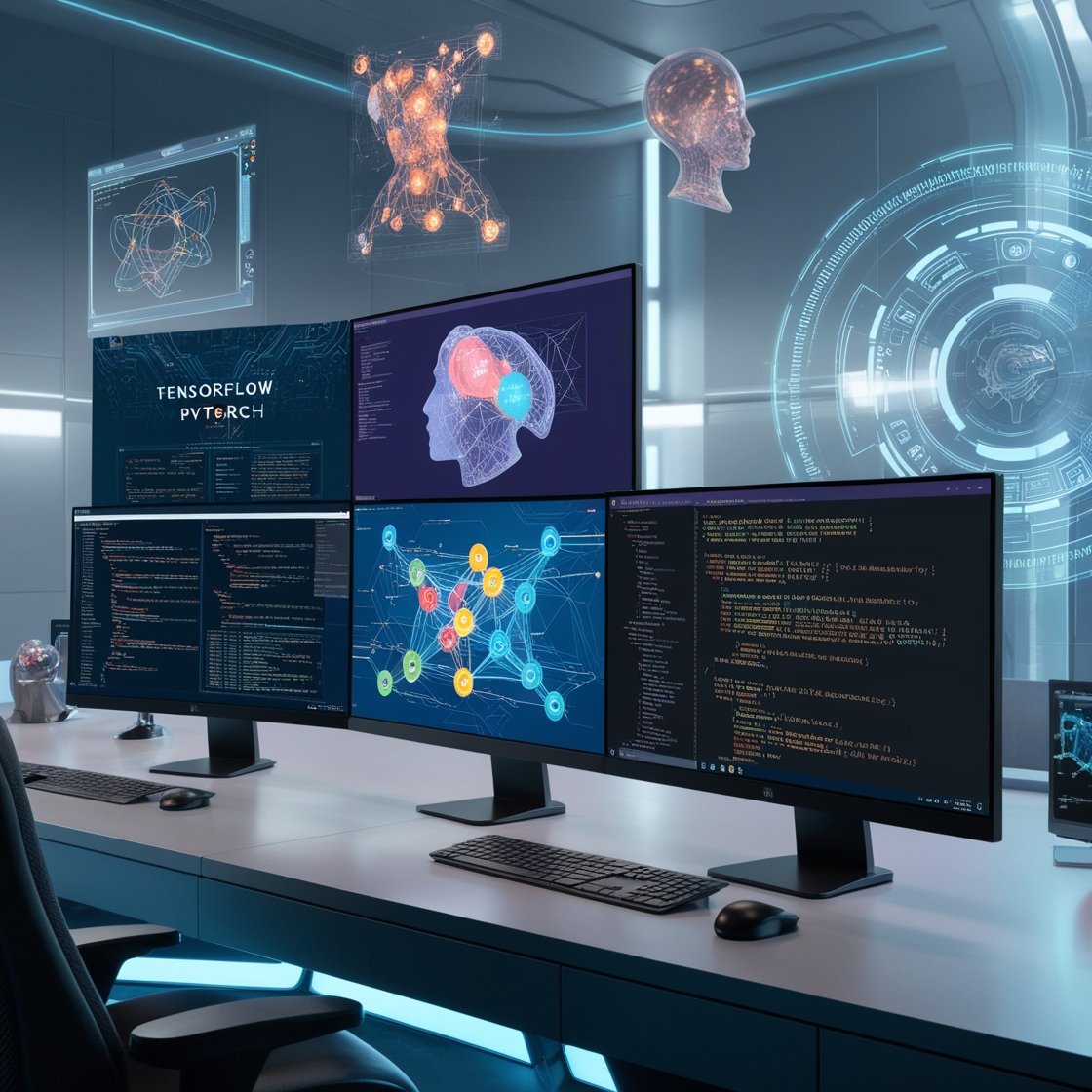Artificial Intelligence (AI) has emerged as a revolutionary force, transforming industries from healthcare to finance. Behind the scenes, AI development frameworks are the engines powering this innovation. These frameworks provide the tools, libraries, and resources to build, train, and deploy AI models effectively. With many options available, it can be challenging to choose the right framework for your specific needs. In this comparative analysis, we will explore some of the leading AI development frameworks, their strengths, weaknesses, and best use cases.
1. TensorFlow
Overview:
TensorFlow, developed by Google Brain, is one of the most popular AI frameworks in the world. It is an open-source platform that enables developers to build and train machine learning models. TensorFlow’s flexibility makes it suitable for various applications, from simple tasks like classification to more complex tasks like object detection and image recognition.
Strengths:
Comprehensive ecosystem: TensorFlow offers a rich set of tools, including TensorFlow Lite for mobile applications, TensorFlow.js for running models in browsers, and TensorFlow Extended (TFX) for deploying ML models in production environments.
Scalability: TensorFlow supports distributed computing, allowing for the training of large-scale machine learning models across multiple CPUs or GPUs.
High-level APIs: TensorFlow provides Keras, a high-level API that simplifies the process of building and training models. Keras is widely regarded for its ease of use and fast prototyping.
Weaknesses:
Steep learning curve: TensorFlow’s low-level API can be difficult for beginners, and mastering it requires a significant time investment.
Debugging complexity: Debugging in TensorFlow can be more complex than other frameworks.
Best Use Cases:
Image and speech recognition
Natural language processing (NLP)
Large-scale machine learning projects requiring distributed training
2. PyTorch
Overview:
PyTorch, developed by Facebook’s AI Research lab, has gained tremendous popularity among researchers and practitioners. It is an open-source deep learning framework that provides a flexible and dynamic computational graph, allowing users to change computations on the go. PyTorch’s simplicity and flexibility make it especially popular in the academic and research communities.
Strengths:
Dynamic computation graph: Unlike TensorFlow’s static computation graph, PyTorch allows for dynamic computation, which makes it easier to write code that adapts to changing conditions and inputs during runtime.
Pythonic approach: PyTorch feels more natural for developers as it closely resembles standard Python syntax and workflows, making it easy to learn and integrate into Python-based projects.
Excellent community support: PyTorch has a growing community of contributors and an extensive set of tutorials and libraries, making it easier for developers to find help and resources.
Weaknesses:
Less mature for production: PyTorch has traditionally been seen as a framework better suited for research than production deployment. However, this is changing with the introduction of tools like TorchServe for deploying PyTorch models at scale.
**Limited mobile support:** PyTorch’s support for mobile platforms is not as robust as TensorFlow’s, though PyTorch Mobile is working to bridge this gap.
Best Use Cases:
Research and academic projects
Dynamic and adaptive machine learning models
Prototyping and experimentation with AI models
3. Apache MXNet
Overview:
Apache MXNet is a deep learning framework designed for both efficiency and flexibility. Known for its scalability, MXNet can train models on a range of devices, from a single CPU to distributed systems with multiple GPUs. It is also the default deep learning framework for Amazon Web Services (AWS), which provides deep integration with AWS tools and services.
Strengths:
Scalability: MXNet’s ability to scale across multiple GPUs and distributed systems makes it ideal for large-scale AI deployments.
Hybrid front-end: MXNet supports both imperative and symbolic programming, offering flexibility for developers who want to switch between dynamic and static graphs.
Efficient memory usage: MXNet is designed to be memory-efficient, which makes it a good choice for deploying deep learning models on low-resource devices.
Weaknesses:
Less intuitive API: To PyTorch and TensorFlow, MXNet’s API can feel less intuitive, particularly for beginners.
Smaller community: While MXNet has strong corporate backing from AWS, its user base is smaller than that of TensorFlow or PyTorch, which means fewer resources, tutorials, and libraries are available.
Best Use Cases:
Large-scale production environments
AI deployments on AWS infrastructure
Low-latency applications requiring efficient memory usage
4. Keras
Overview:
Keras is a high-level neural network programming API written in Python, and it is capable of running on top of TensorFlow, Microsoft Cognitive Toolkit (CNTK), and Theano. Designed for ease of use, Keras allows developers to quickly build and experiment with deep learning models without needing to worry about low-level implementation details.
Strengths:
User-friendly: Keras is one of the easiest frameworks for building deep learning models, thanks to its simple and intuitive API.
Fast prototyping: Keras is perfect for prototyping because of its high-level design, which enables quick experimentation and model iteration.
Integration with TensorFlow: Since Keras is now part of TensorFlow, it benefits from the broader TensorFlow ecosystem while retaining its simplicity.
Weaknesses:
Limited flexibility: While Keras is great for prototyping, it lacks the flexibility required for highly customized models compared to frameworks like PyTorch.
**Not ideal for large-scale models:** For more complex and large-scale deep learning models, developers often prefer to use TensorFlow or PyTorch directly.
Best Use Cases:
Rapid prototyping of deep learning models
Projects that prioritize simplicity and ease of use over flexibility
Teaching and learning deep learning concepts
5. Caffe
Overview:
Caffe, developed by Berkeley AI Research (BAIR), is a deep learning framework known for its speed and efficiency, particularly when applied to computer vision tasks. It is written in C++ and has a Python interface. Caffe is designed to be lightweight and modular, which makes it highly efficient for image processing tasks.
Strengths:
High performance: Caffe is optimized for speed, making it one of the fastest frameworks for training deep learning models, especially in computer vision.
Modularity: The modular architecture of Caffe allows for easy customization and integration with other software.
Weaknesses:
Limited flexibility: Caffe is not as flexible as PyTorch or TensorFlow, and it can be tricky to use for tasks outside of computer vision.
Smaller community and less frequent updates: The framework’s user base is shrinking as other frameworks like TensorFlow and PyTorch gain popularity.
Best Use Cases:
Computer vision tasks such as image classification and object detection
Projects where speed and performance are critical
6. Theano
Overview:
Theano, developed by the Montreal Institute for Learning Algorithms (MILA), is one of the oldest deep learning frameworks and has laid the groundwork for many modern frameworks, including TensorFlow and PyTorch. Although it is no longer actively maintained, Theano is still used in some niche applications due to its efficiency in optimizing mathematical expressions.
Strengths:
Optimized for computation: Theano is highly optimized for running on both CPUs and GPUs, offering fast computation.
Strong foundation for other frameworks: Theano has influenced the development of frameworks like Keras and TensorFlow.
Weaknesses:
No longer actively developed: Theano is no longer being actively maintained, which limits its appeal for new projects.
Steep learning curve: Theano’s low-level nature makes it harder to learn compared to higher-level frameworks like Keras or PyTorch.
Best Use Cases:
Academic research in mathematical optimization
Projects that require customized deep learning models at a low level
Conclusion
Choosing the right AI development framework depends on your specific project requirements. TensorFlow and PyTorch dominate the AI landscape, with TensorFlow offering scalability and production-ready features and PyTorch excelling in flexibility and ease of use. For those working with AWS infrastructure, Apache MXNet provides a highly scalable solution. Keras is perfect for beginners or those looking for rapid prototyping, while Caffe and Theano are better suited for specialized tasks like computer vision or mathematical optimization.
By understanding the strengths, weaknesses, and best use cases of these frameworks, you can make an informed decision to maximize your AI project’s potential.





